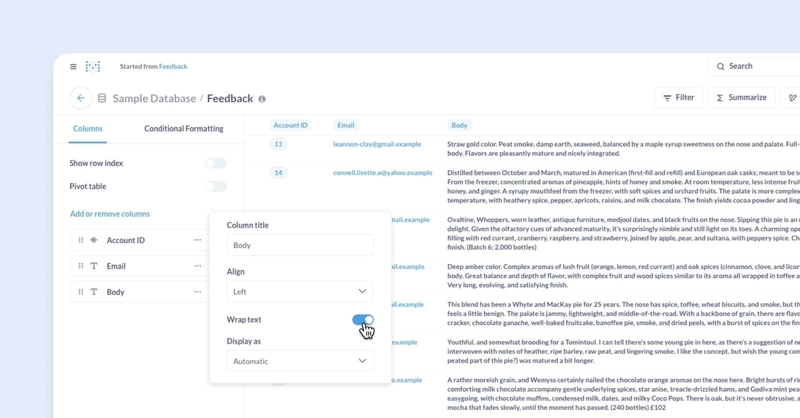The `field` Keyword in C# 13 — Cleaner Auto-Property Logic with Compiler-Generated Backing Fields
The field Keyword in C# 13 — Cleaner Auto-Property Logic with Compiler-Generated Backing Fields Level: Advanced Tags: #csharp #dotnet #csharp13 #properties #autoproperty #fieldkeyword In C# 13, the language introduces a new contextual keyword: field, which allows developers to interact directly with the compiler-synthesized backing field of an auto-implemented property. This feature is part of C# 13’s preview features (GB), and available with .NET 9. You must enable it via: preview The field keyword enables more precise control over property accessors, while maintaining the concise syntax of auto-properties. What Problem Does It Solve? Previously, to enforce logic like null-checking, you had to convert an auto-property into a full property with an explicit backing field: private string _name; public string Name { get => _name; set => _name = value ?? throw new ArgumentNullException(nameof(value)); } This breaks encapsulation, adds noise, and requires declaring _name manually. C# 13 Solution: Use field Instead Now, you can write: public string Name { get; set => field = value ?? throw new ArgumentNullException(nameof(value)); } This keeps the auto-property feel, but gives you a hook into the set accessor for validation, transformation, or other logic. Example: Clean Business Rule Injection public string Email { get; set => field = value?.ToLowerInvariant() ?? throw new ArgumentNullException(nameof(value)); } field refers to the backing field generated by the compiler You don’t need to declare it manually It works just like _email would, but safer and cleaner Summary of Behavior Feature Supported? Use field in set accessor ✅ Yes Use field in get accessor ✅ Yes Omit one or both accessors ✅ Supported Use with expression-bodied properties ✅ Supported Use in constructors ❌ Not applicable Warnings & Ambiguities If you declare a field named field, you may hit shadowing issues inside property accessors. Disambiguate with: this.field // property keyword @field // actual field named "field" Example private string field; // user-declared field public string Name { get => this.field; // Refers to the compiler's backing field set => this.field = value; } To avoid confusion: avoid naming variables field in the same scope. Why Use field? Benefit Description Clean logic injection Validation, trimming, formatting in set Avoids extra member declaration No need for _name or similar Better source generation compatibility Tools can use field safely in templates Keeps the code DRY No duplication between property and field Learn More Auto-Implemented Properties C# 13 Preview Features Final Thoughts The field keyword in C# 13 is a small but powerful enhancement that makes auto-properties more flexible and less verbose. It strikes a balance between readability and expressive control, especially for library authors, architects, and developers writing business logic-heavy code. ⚠️ Use it thoughtfully — especially in teams where field name collisions may arise. But once mastered, it will make your property implementations simpler and more expressive. Written by: [Cristian Sifuentes] – Property Design Specialist | Refactoring Evangelist | Modern .NET Architect Have you tried field in C# 13 preview? Share your patterns, and let’s refine clean property logic together!

The field Keyword in C# 13 — Cleaner Auto-Property Logic with Compiler-Generated Backing Fields
Level: Advanced
Tags: #csharp #dotnet #csharp13 #properties #autoproperty #fieldkeyword
In C# 13, the language introduces a new contextual keyword: field, which allows developers to interact directly with the compiler-synthesized backing field of an auto-implemented property.
This feature is part of C# 13’s preview features (GB), and available with .NET 9. You must enable it via:
The field keyword enables more precise control over property accessors, while maintaining the concise syntax of auto-properties.
What Problem Does It Solve?
Previously, to enforce logic like null-checking, you had to convert an auto-property into a full property with an explicit backing field:
private string _name;
public string Name
{
get => _name;
set => _name = value ?? throw new ArgumentNullException(nameof(value));
}
This breaks encapsulation, adds noise, and requires declaring _name manually.
C# 13 Solution: Use field Instead
Now, you can write:
public string Name
{
get;
set => field = value ?? throw new ArgumentNullException(nameof(value));
}
This keeps the auto-property feel, but gives you a hook into the set accessor for validation, transformation, or other logic.
Example: Clean Business Rule Injection
public string Email
{
get;
set => field = value?.ToLowerInvariant()
?? throw new ArgumentNullException(nameof(value));
}
-
fieldrefers to the backing field generated by the compiler - You don’t need to declare it manually
- It works just like
_emailwould, but safer and cleaner
Summary of Behavior
| Feature | Supported? |
|---|---|
Use field in set accessor |
✅ Yes |
Use field in get accessor |
✅ Yes |
| Omit one or both accessors | ✅ Supported |
| Use with expression-bodied properties | ✅ Supported |
| Use in constructors | ❌ Not applicable |
Warnings & Ambiguities
- If you declare a field named
field, you may hit shadowing issues inside property accessors. - Disambiguate with:
this.field // property keyword
@field // actual field named "field"
Example
private string field; // user-declared field
public string Name
{
get => this.field; // Refers to the compiler's backing field
set => this.field = value;
}
To avoid confusion: avoid naming variables field in the same scope.
Why Use field?
| Benefit | Description |
|---|---|
| Clean logic injection | Validation, trimming, formatting in set
|
| Avoids extra member declaration | No need for _name or similar |
| Better source generation compatibility | Tools can use field safely in templates |
| Keeps the code DRY | No duplication between property and field |
Learn More
Final Thoughts
The field keyword in C# 13 is a small but powerful enhancement that makes auto-properties more flexible and less verbose. It strikes a balance between readability and expressive control, especially for library authors, architects, and developers writing business logic-heavy code.
⚠️ Use it thoughtfully — especially in teams where field name collisions may arise. But once mastered, it will make your property implementations simpler and more expressive.
Written by: [Cristian Sifuentes] – Property Design Specialist | Refactoring Evangelist | Modern .NET Architect
Have you tried field in C# 13 preview? Share your patterns, and let’s refine clean property logic together!









































































































































































![[The AI Show Episode 146]: Rise of “AI-First” Companies, AI Job Disruption, GPT-4o Update Gets Rolled Back, How Big Consulting Firms Use AI, and Meta AI App](https://www.marketingaiinstitute.com/hubfs/ep%20146%20cover.png)

























































































































![[DEALS] The Premium Python Programming PCEP Certification Prep Bundle (67% off) & Other Deals Up To 98% Off – Offers End Soon!](https://www.javacodegeeks.com/wp-content/uploads/2012/12/jcg-logo.jpg)















































.jpg?#)


































































-Mafia-The-Old-Country---The-Initiation-Trailer-00-00-54.png?width=1920&height=1920&fit=bounds&quality=70&format=jpg&auto=webp#)
-Nintendo-Switch-2---Reveal-Trailer-00-01-52.png?width=1920&height=1920&fit=bounds&quality=70&format=jpg&auto=webp#)























_Aleksey_Funtap_Alamy.jpg?width=1280&auto=webp&quality=80&disable=upscale#)
_Sergey_Tarasov_Alamy.jpg?width=1280&auto=webp&quality=80&disable=upscale#)















































































































![Apple Shares Official Trailer for 'Stick' Starring Owen Wilson [Video]](https://www.iclarified.com/images/news/97264/97264/97264-640.jpg)


![Beats Studio Pro Wireless Headphones Now Just $169.95 - Save 51%! [Deal]](https://www.iclarified.com/images/news/97258/97258/97258-640.jpg)






























































































